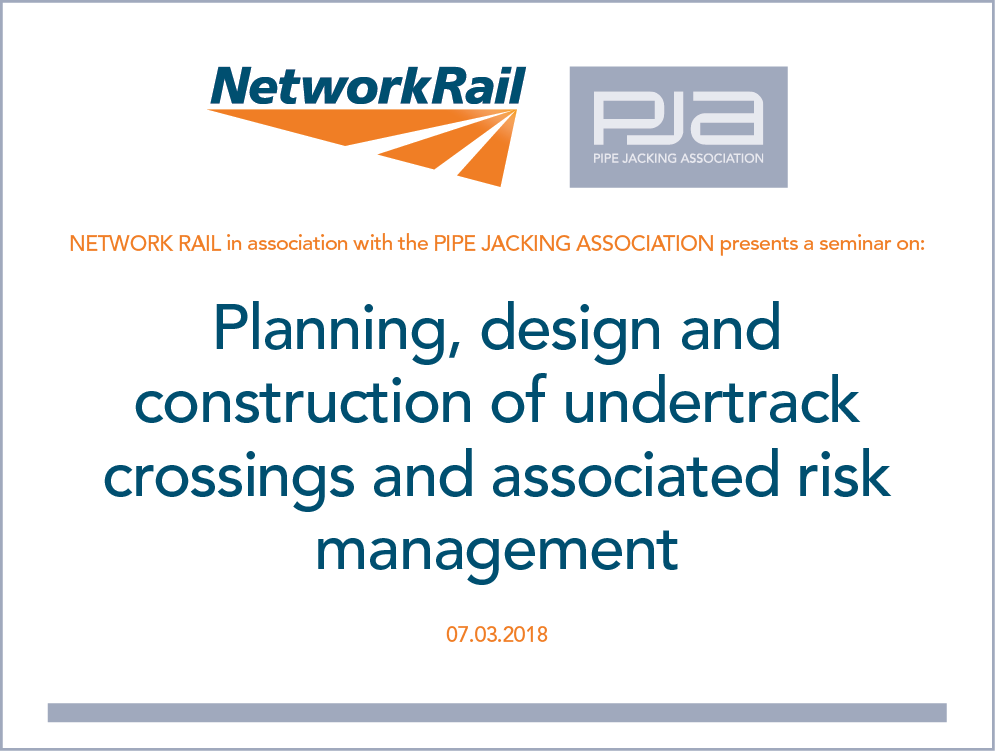
Member's News
Clicking a link will open the news section of a member’s website in a separate window...

Clicking a link will open the news section of a member’s website in a separate window...

National Infrastructure Commission (NIC) and Department for Transport are urged to take action.
A consortium of high powered construction and road user interests that include the Institution of Civil Engineers (ICE), the Civil Engineering Contractors Association (CECA) and the RAC Foundation have put forward proposals to the National Infrastructure Commission and the Department for Transport that measures are taken to reduce or eliminate the problems of disruption to strategic urban infrastructure by utility roadworks.
The initiative follows a report initiated by Professor Lord Robert Mair, President of the Institution of Civil Engineers that resulted in a policy paper “What can be done to reduce congestion caused by roadworks?”.
Commenting on the paper Professor Lord Robert Mair, said:
“Congestion continues to be a major headache for road users and it is essential that industry, and government, look at ways to lessen the problem. It is important that the users, many who are tax payers, are considered equally alongside the need for utilities companies to undertake their work”.
The paper resulted from a proposal put forward by the Pipe Jacking Association, a specialist organisation involved with the installation on non-disruptive utilities in urban locations. Contributors to, and supporters of, the non-disruptive installation of urban utilities also include the UK Society for Trenchless Technology and Birmingham University’s Department of Civil Engineering, a world leader in research into non-disruptive trenchless systems for the installation of utilities.
Graeme Monteith, Pipe Jacking Association Chair, noted: “We believe that the NIC is responsive to a progressive outcome-based solution to minimising strategic urban road disruption caused by utility roadworks. Non-disruptive solutions need to be prioritised in the interests of road users, local communities and other stakeholders wherever practicable and economic”.
In an open letter to Sir John Armitt, Chair of the National Infrastructure Commission, Graeme Monteith, on behalf of the consortium, notes the conflict between the requirement to install and upgrade essential utilities and the communities’ requirements for a continuous fully operational urban road network. It notes that one of our most important strategic infrastructures, key urban highways, lack coherent protection and management unlike other major transport networks such as those operated by Highways England and Network Rail.
The ICE Report noted other key areas to safeguard key urban roads to include a requirement for utilities to produce impact statements when carrying out works in congested urban areas, empowering highway authorities to enable them to dictate the use of non-disruptive installation and renovation techniques wherever practical and economic, and the further development of innovative technologies that can enable utility installation and renovation with minimal or no disruption to the highway infrastructure.
In its submission the consortium urges the National Infrastructure Commission to prioritise the pressures on urban road capacity in its forthcoming infrastructure assessment. It argues that there is a strong case for government to commission a review of the management of street works, in particular the economic impacts of disruption and the appropriate regulatory incentives that apply to the utility companies, as well as the availability, costs and benefits of the engineering options that exist for minimising the disruption caused by street works - including alternatives to breaking the carriageway at all. It suggests that such a review would need to draw in not just the perspectives of highway authorities and contractors but also the utility companies and their regulators.
Further information:
Andrew Marshall
Pipe Jacking Association
Mobile: 07785 297111
Email: andrew.marshall@pipejacking.org

NetworkRail, in association with the Pipe Jacking Association (PJA),recently presented a nationwide seminar on the planning, design andconstruction of undertrack crossings and associated risk management.Copies of the seminar content can be downloaded from the presentationsection of the PJA website:(http://www.pipejacking.org/viewdocument/show/~assets~pj~uploads~publications~NRPJA_Seminar_Final_Handout.pdf)
The presentation focused on the capacity to identify safety risks posed by undertrack crossings and presenting suitable controls to protect the railway. It touched on the background surrounding the derailment at Stoke Lane Crossing in Nottingham to demonstrate the need to consider lessons learnt within the development of the revised NR standard NR/L2/CIV/044.This was followed by an overview of safety risks inherent in pipe jacking, health and safety legislation and risk management, occupational health, and atmospheric monitoring and contamination.
The presentation focused on the capacity to identify safety risks posed by undertrack crossings and presenting suitable controls to protect the railway. It touched on the background surrounding the derailment at Stoke Lane Crossing in Nottingham to demonstrate the need to consider lessons learnt within the development of the revised NR standard NR/L2/CIV/044.This was followed by an overview of safety risks inherent in pipe jacking, health and safety legislation and risk management, occupational health, and atmospheric monitoring and contamination.
Luigi Rocco, senior engineer at Network Rail said that the PJA’s involvement in developing and raising awareness of the revised standard represented a first rate example of how collaboration between a strategic infrastructure operator and industry leaders can promote improved working practices and enhance safety management.
Commenting on the seminar, Graeme Monteith, chairman of the Pipe Jacking Association and Tunnel Engineering Manager at Barhale noted: “Following historic issues with pipe jacking under rail tracks, this event provided the opportunity to update Network Rail’s asset managers, consulting engineers, and the underground industry on safe working practices as outlined in the new undertrack crossing standard. As a preferred method for many crossings, pipe jacking can continue to be employed with confidence where essential utilities need to be installed under rail tracks”.
Network Rail standard NR/LR/CIV/044 outlines the need to understand, assess and manage risk through the implementation of robust control measures. This provides a safe means of the control for the railway risks associated to the construction of pipes, culverts and tunnels. Jim Kirby, PJA vice-chairman and technical director COWI, who worked with Network Rail in the development of the standard commented: “There are a number of key changes that are included in the revision of the standard such as clarity of roles and responsibilities and design life”. He added: “Key engineering factors within the standard include the relationship with existing infrastructure, depth of cover, ground movement, design checking and technical assurance, along with track and works monitoring”.
The risk management and health and safety aspects of the seminar were presented by Dr Donald Lamont, principal of Hyperbaric and Tunnel Safety and formerly head of tunnel and ground engineering for the Health and Safety Executive.
Further Information:
Andrew Marshall
Pipe Jacking Association
www.pipejacking.org
Email: andrew.marshall@pipejacking.org
Mobile: 07785 297111

A thesis covering the disaggregation of soil during slurry pipe jacking has been published by the Geotechnical Engineering Research Group at City University, London. The dissertation has been submitted for a Doctor of Philosophy degree by Neil Philips who was supported throughout the project by funding from the Pipe Jacking Association.
The thesis can be downloaded from the research section of the Pipe Jacking Association website : here
The abstract summarising the research appears below:
ABSTRACT
Pipe jacking is an environmentally friendly technique for the installation of services and utilities, which leads to minimum disturbance during installation. It is an important construction method for urban environments where disruption to transport is expensive. The need to tunnel through varying geologies requiring support during tunnelling has led to the increased use of slurry tunnel boring machines. The slurry is used to stabilise the tunnel face and transport the excavated spoil to the surface.
The research detailed in this dissertation assesses the magnitude of soil disaggregation during the excavation and pumping of the arisings within the slurry to the separation plant. The two main objectives were to create a mixing test that would allow the disaggregation of the soil to be predicted prior to specification of the separation plant and to link the results of this test to typical soil properties. In addressing the second objective efforts have also been made to characterise the
different mechanisms of disaggregation observed in the mixing tests. The typical soil testing methods used to classify the soil samples were; Atterberg limits, particle size distributions, unconfined compressive strength, mineralogy (XRD) and chemical analysis (XRF).
A mixing test has been designed using a Hobart planetary mixer to classify the amount of soil cuttings that disaggregate during mixing with a slurry fluid. This test was found to produce repeatable results using Speswhite Kaolin samples and then used to assess the differences in disaggregation rates of London Clay, Upper Mottled Beds and Fleetwood Silts. In total 71 mixing tests were completed during the development of the test and the classifying of the soils. The test involved mixing distilled water with 10 clay cuttings for varying times. The resulting solid particles
were then sized through a series of sieves and sedimentation tests carried out to produce a particle size distribution of the resulting soil.
The mixing tests showed the Upper Mottled Beds to have the highest rate of disaggregation, with the Fleetwood Silts displaying the least. This has been attributed to the level of cementing within the soil and the microstructure of the clay and silt sized particles.
The liquidity index and initial soil strength were not found to be important factors in the predicting the rate of disaggregation of a particular soil type, but were significant for some soils. The Fleetwood Silts had the lowest unconfined compressive strengths but also produced the least amount of disaggregated soil. The soil macrofabric, although not quantified, also appeared to have an effect on the rate of disaggregation of a particular soil. An increase in discontinuities within the sample produced more cuttings larger than 4.75 mm but a lower amount of 63 ?m sized fraction disaggregated.
In addition to the mixing tests carried out using water, a series of tests were completed using a polymer based slurry, HydroCut CF. This showed mixed results; The polymer prevented any clay or silt sized particles from passing through the 63 ?m sieve. However, there was no overall reduction in disaggregation and a significant increase in the time it took to sieve the slurry.

The Pipe Jacking Association currently has funds available and wishes to offer a number of bursaries to universities that are currently, or propose undertaking, MSc or other postgraduate research projects in subjects which can be considered to support pipe jacking, tunnelling or complementary activities. The proposed bursaries are £2,000 each although these could be increased in appropriate circumstances. Applications should be sent to the Pipe Jacking Association secretary, andrew.marshall@pipejacking.org , with a brief description of the research proposal, the manner in which the funds will be spent, and the relevance of the research to the industry.
The Pipe Jacking Association is a trade association with a successful history of research collaboration with Oxford and Cambridge Universities, as well as Leeds and Newcastle and our current project is nearing completion at City University. In addition, the Pipe Jacking Association has been instrumental in establishing and supporting tunnelling technology courses at Bridgwater Technical College and Kingston University. It has also disseminated results of its research to both industry and designers through conferences, seminars, lectures, papers, and Pipe Jacking Association publications which are freely available. Full details of our past research activities can be viewed on our website: www.pipejacking.org .
Applications should generally be made by mid-September for the following academic year. In the event of a Pipe Jacking Association bursary being awarded the Pipe Jacking Association will delegate a suitably experienced representative from a member company to attend research meetings, as appropriate, and support the project as required.

Digging up urban roads creates massive carbon emissions compared to non-disruptive tunnelling solution. Now, savings of up to 75% in carbon emissions have been demonstrated by a web-based application (www.pipejackingco2calculator.com) which compares open-cut utility installation with non-disruptive solutions, such as pipejacking or microtunnelling, for the installation of sewers and other utilities in urban highways. The comparison tool has been developed on behalf of the Pipe Jacking Association by TRL (Transport Research Laboratory), the international consultancy that provides research, consultancy, testing and certification for all aspects of transport.
The Pipe Jacking Association represents the major contractors and suppliers in the pipejacking and microtunnelling industry. Pipe jacking, generally referred to in the smaller diameters as microtunnelling, is a non-disruptive technique for installing underground pipelines, ducts and culverts. Powerful hydraulic jacks are used to push specially designed pipes through the ground behind a shield at the same time as excavation is taking place.
The 75% saving in carbon emissions, (>370 tonnes), was achieved by comparing the installation of 500 metres of 600mm pipeline, 6 metres deep, using non-disruptive techniques with open-cut construction. Additionally, the construction period for the trenchless installation was projected to be less than half that of the open-cut construction1. At shallower depths carbon savings are typically in the range of 50-60%.
The free and easy to use carbon dioxide emissions calculator, that in seconds can produce indications of comparative emissions, has been verified by WRc plc, an independent research-based consultancy that provides sustainable solutions for the protection, enhancement and maintenance of the natural environment.
TRL’s project manager, Matthew Wayman commented: “The findings should encourage water and other utilities to consider pipejacking and other non-disruptive trenchless techniques when appraising new utility installations.” The application enables the user to identify more carbon (and energy) efficient options, and can therefore assist them to meet reduction targets established as a result of applying carbon regulations or other voluntary guidance, including the Department of Energy & Climate Change’s CRC Energy Efficiency Scheme (formerly Carbon Reduction Commitment)2, or other independently initiated key performance indicators.
Data for the calculator has been drawn from a number of authoritative sources that include the University of Bath’s Inventory of Carbon and Energy for construction materials, the Concrete Pipeline Systems Association, and outputs from the Department for Transport’s QUADRO program (Queues and Delays at Roadworks) developed by TRL. Reports can readily be produced that not only provide comparative emissions data for open-cut and non-disruptive options, they also detail data sources and assumptions utilised in the calculations.
Further options are available to input detailed additional data as a project progresses.
Notes to Editors
1 Roadworks related congestion is estimated to cost the UK economy around £4 billion a year (DfT press release 26 January 2012: New powers for councils to control roadworks: see note re link below). Successive governments and London mayors have expressed concern and attempted to control the disruption caused by utility companies and in early 2012 the Government announced enhancements to the New Roads and Street Works Act enabling local authorities to charge utility companies up to £2,500 per day for digging up busy roads at peak times (lane rental). Apart from carbon savings and the disruption costs, open-cut construction followed by re-instatement is estimated to reduce highway life by up to 30% representing a substantial additional community cost for highway authorities. It is hoped that lane rental charges, together with readily available evidence of carbon savings, and the community cost of highway degradation occasioned by open-cut installation will encourage utilities to adopt non-disruptive trenchless options wherever and whenever possible.
https://www.gov.uk/government/news/new-powers-for-councils-to-control-road-works
2 CRC is a mandatory scheme aimed at improving energy efficiency and cutting emissions in large public and private sector organisations which are responsible for around 10% of the UK’s emissions and features a range of reputational, behavioural and financial drivers. The Environmental Key Performance Indicators (KPIs) are an initiative by Defra to help businesses demonstrate their corporate sustainability credentials, in particular across a range of environmental indicators that include water and waste.